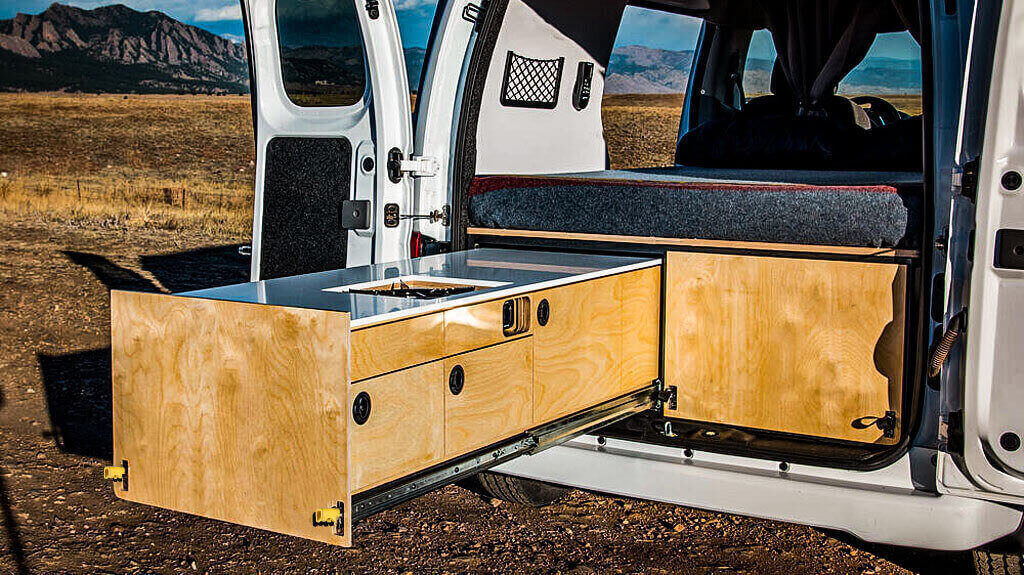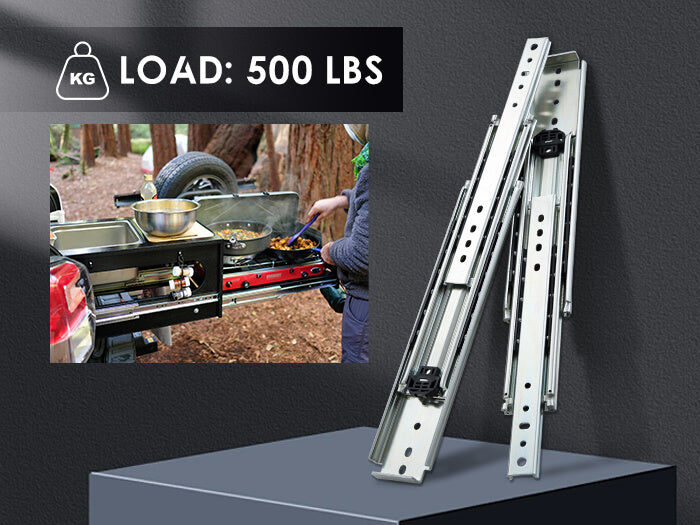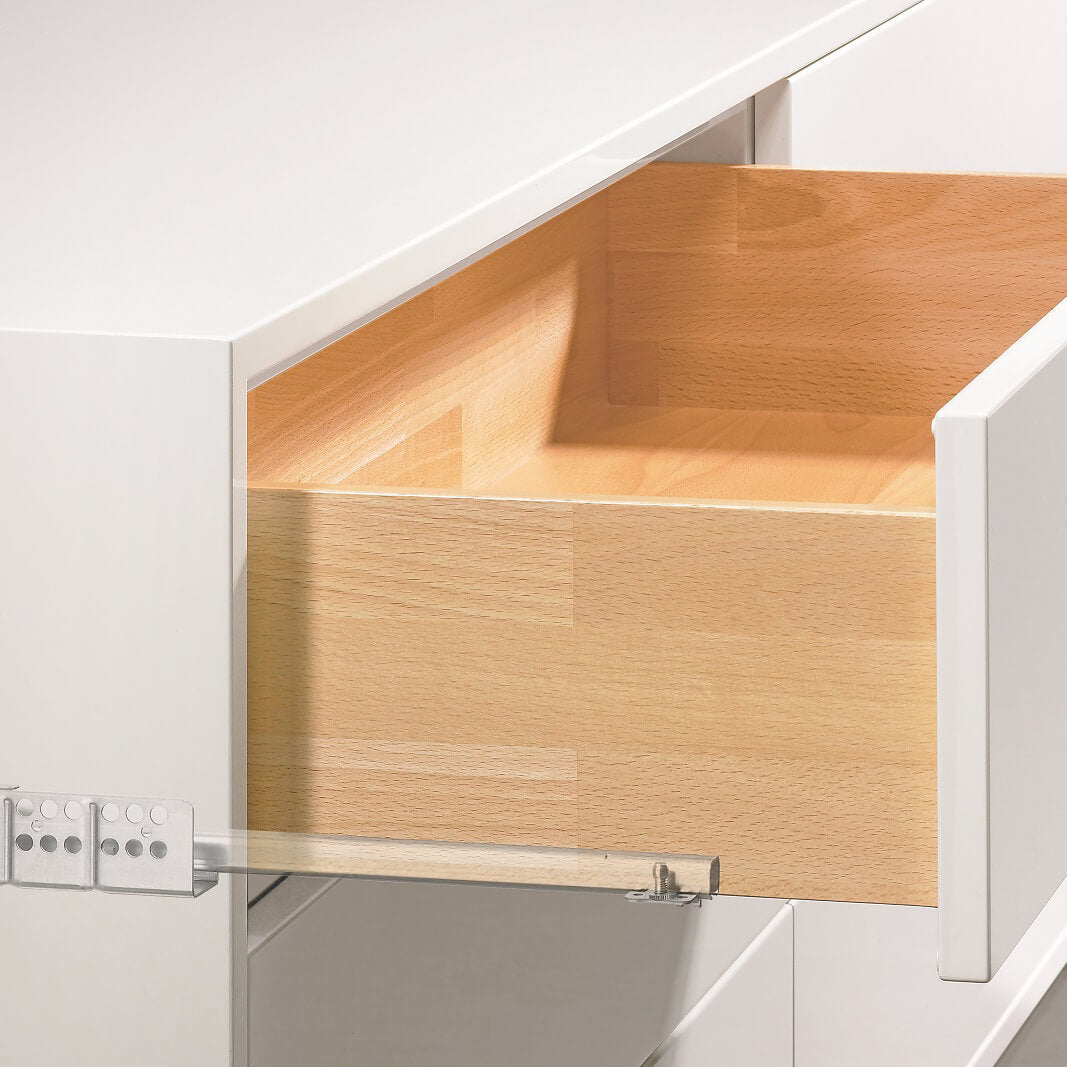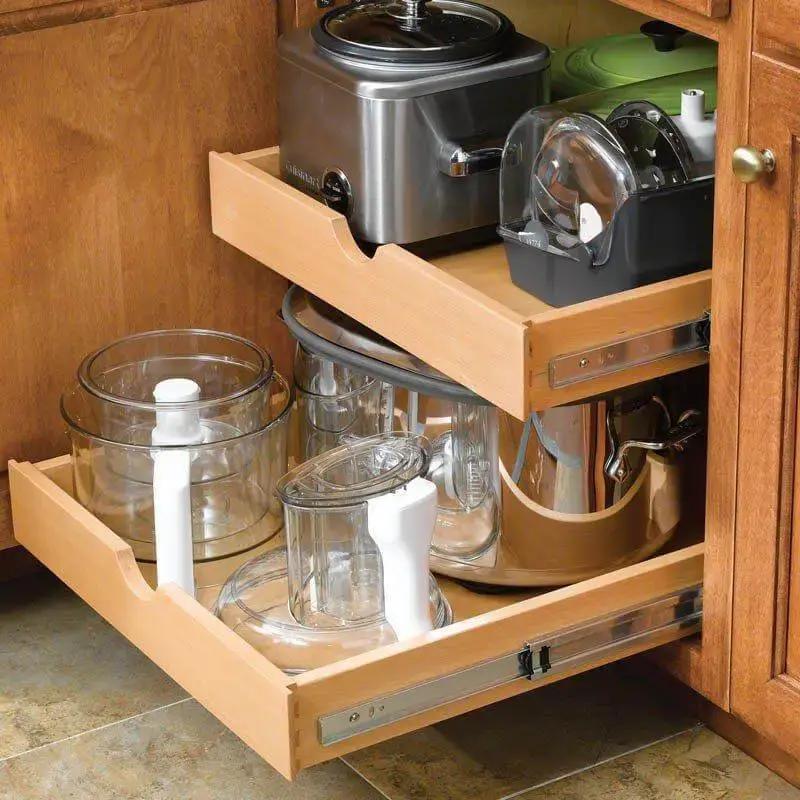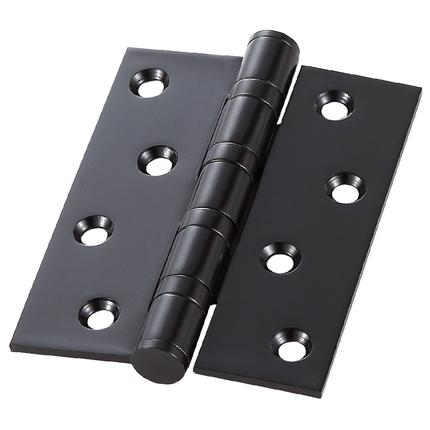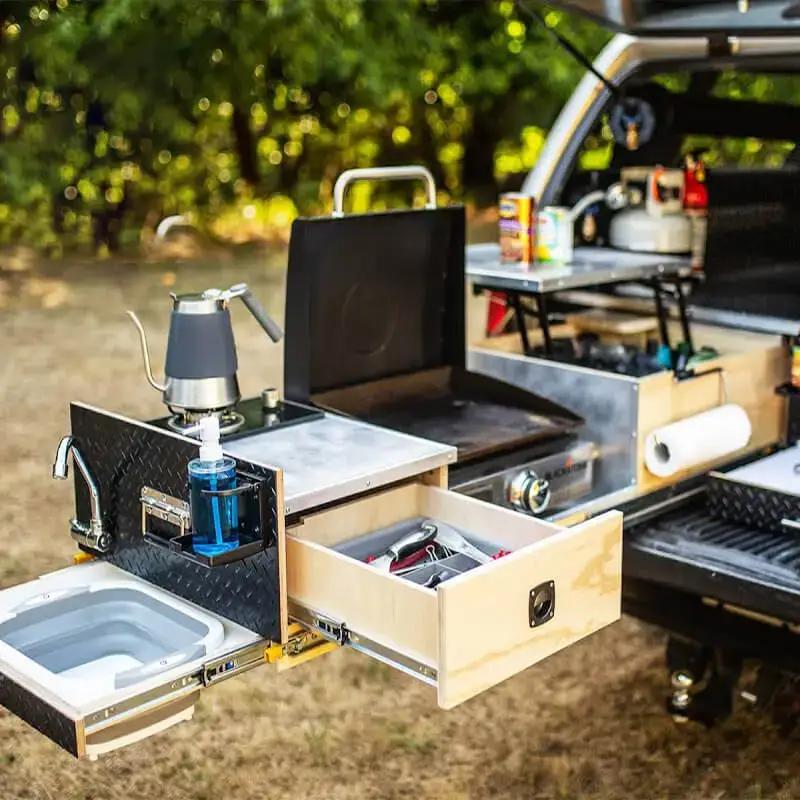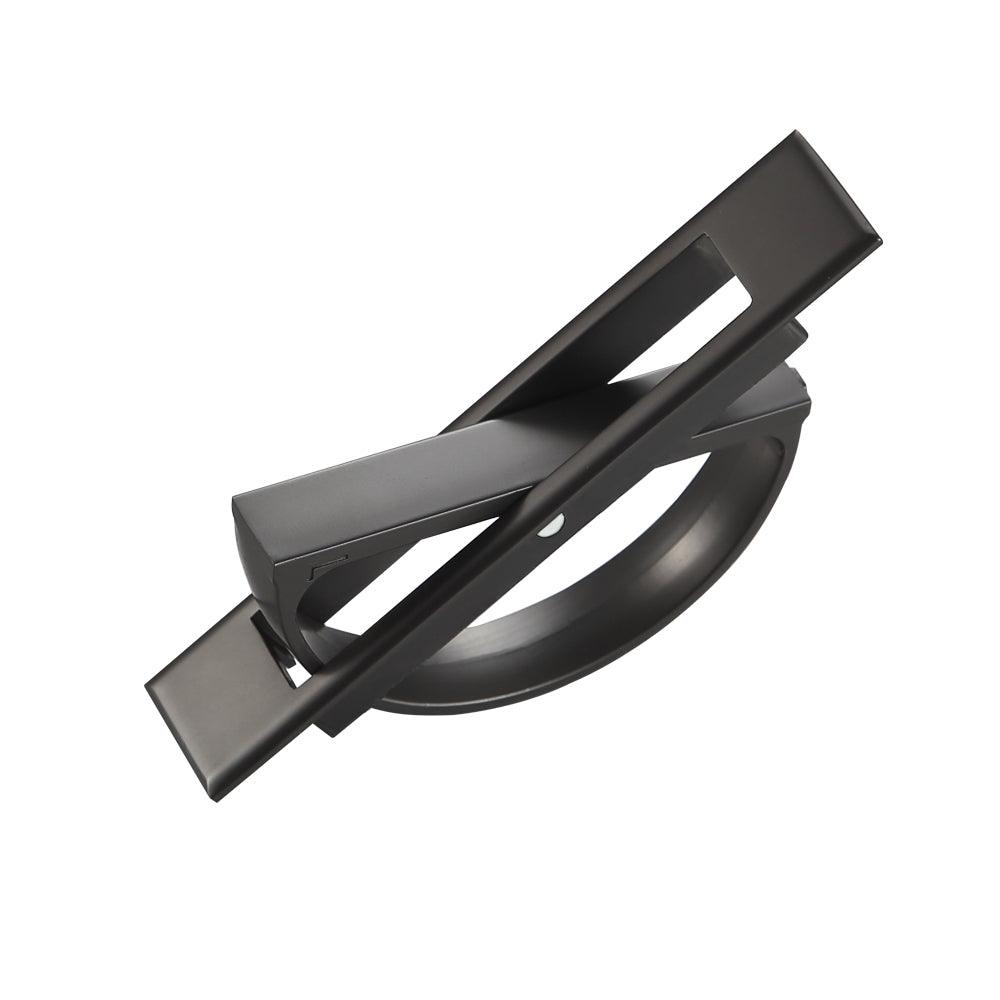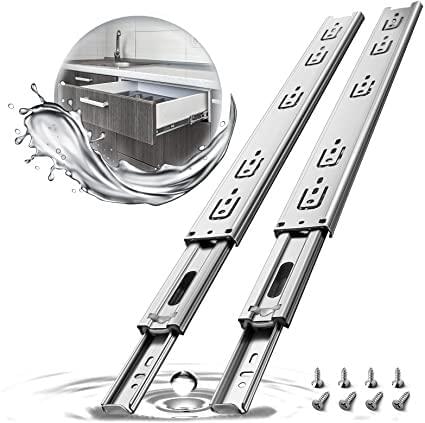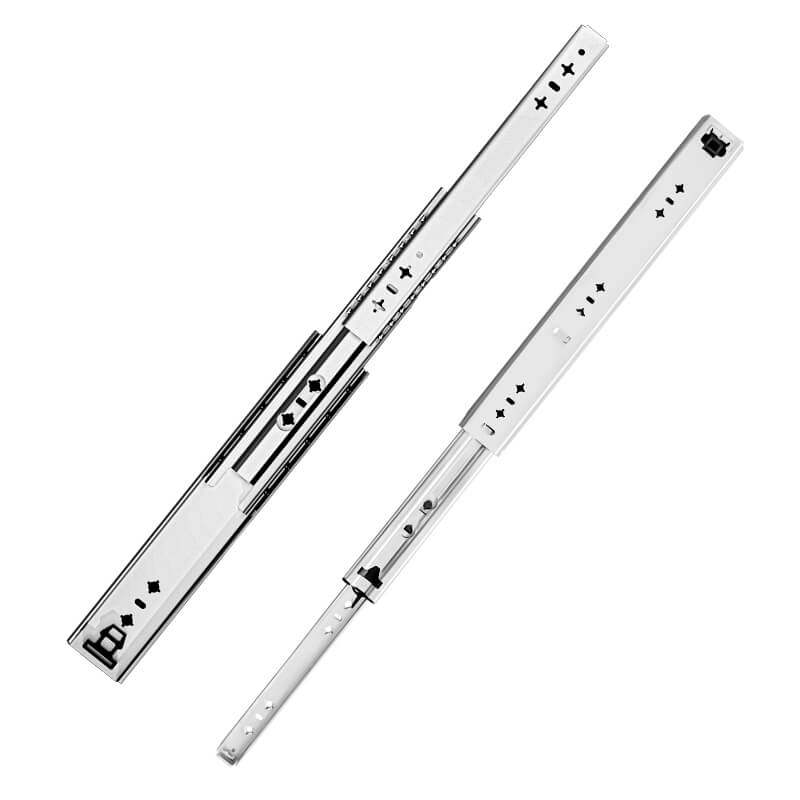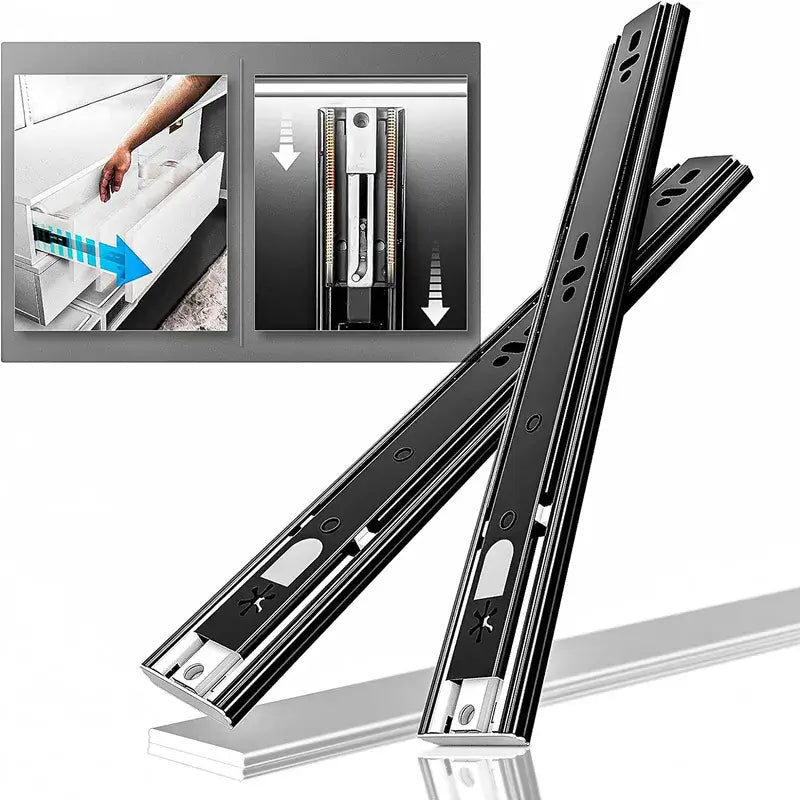In the world of hardware and industrial components, few things are as crucial as a locking slide. Whether you're opening a drawer, adjusting your car seat, or working with heavy machinery, you're likely benefiting from the precision and security provided by locking slides. But what exactly is a locking slide, and how do these unassuming devices play such a vital role in so many industries?
In this comprehensive guide, we will explore the intricacies of locking slides, their various types, working mechanisms, and applications. You'll gain a deeper understanding of how they function and why they are indispensable in industries ranging from furniture and automotive to heavy machinery. So, let's dive in and uncover the secrets behind the unassuming but indispensable locking slide.
Understanding Locking Slides

What Are Locking Slides?
Locking slides, sometimes referred to as lockable drawer slides or simply drawer locks, are hardware components designed to enable controlled movement and secure positioning in various applications. Unlike standard slides that allow free movement, locking slides incorporate mechanisms that can fix them in a specific position. This ability to lock the slide in place makes them invaluable in situations where stability, safety, and precise control are paramount.
Locking slides are engineered to meet specific needs, and their versatility ensures they find applications in an array of industries. Whether it's ensuring a drawer stays shut, securing a car seat in a desired position, or supporting heavy machinery components, locking slides provide a reliable and often discreet solution. Their ubiquity is a testament to their effectiveness.
Types of Locking Slides
Locking slides come in a variety of types, each tailored to specific uses and requirements. Understanding these types is crucial for selecting the right locking slide for a given application. Let's delve into the different categories of locking slides:
Drawer Locking Slides: Commonly used in the furniture industry, these slides are designed to allow smooth extension and secure locking of drawers in furniture and cabinets. This prevents unintended opening and provides stability.
Telescopic Locking Slides: These slides are designed for applications that require controlled extension and secure stopping points. You'll find them in keyboard trays, toolboxes, and other structures where precise positioning is essential.
Push-Button Locks: Utilizing a push-button mechanism, these locking slides are prevalent in the automotive industry, particularly for seats and sunroof mechanisms. Users can quickly and intuitively lock or unlock these slides.
Lever Locking Slides: Lever-actuated locking slides are often used in heavy machinery and industrial equipment. The lever mechanism provides a robust and secure locking function, ensuring safety and precise positioning.
Each type of locking slide has its unique features and is designed to excel in specific applications. By understanding these distinctions, you can choose the right locking slide for your specific needs, ensuring optimal performance and safety.
How Locking Slides Work
Mechanism and Components
To comprehend how locking slides function, it's essential to understand the fundamental components and mechanisms that make them work. Locking slides typically consist of:
Rails: The rails serve as the guiding tracks for the sliding component. They ensure smooth and controlled movement, aligning the slide accurately.
Bearings or Rollers: Bearings or rollers facilitate smooth sliding along the rails, reducing friction and wear. They are essential for precision and ease of movement.
Locking Mechanisms: This is where the magic happens. Locking slides are equipped with mechanisms that secure the slide in place. The type of mechanism varies depending on the specific locking slide design, such as push-buttons, levers, or other locking mechanisms.
Locking Mechanisms
Locking mechanisms are the heart of locking slides, enabling them to achieve their primary function: secure positioning. Let's take a closer look at some common locking mechanisms:
Push-Button Locks: These locking slides feature a push-button mechanism. Pressing the button allows the slide to move freely, and releasing it locks the slide in place. This intuitive design is commonly used in applications where quick and straightforward operation is essential.
Lever Locks: Lever-actuated locking slides employ a lever mechanism. When the lever is in the locked position, it prevents movement of the slide. The lever can be easily engaged or disengaged, providing robust and secure locking.
Pin Locks: In some locking slides, a pin mechanism is used. When engaged, the pin prevents any movement of the slide, offering a stable and reliable hold.
Other Custom Mechanisms: Some locking slides utilize custom-designed mechanisms to meet specific application needs. These mechanisms may include combination locks, key-operated locks, or electronic controls, depending on the desired level of security and control.
The choice of locking mechanism often depends on the application's requirements for ease of use, security, and precision. Different industries and use cases may favor one type of locking mechanism over another.
Understanding the components and locking mechanisms of locking slides is vital for using them effectively in various applications. Whether in your furniture, automotive, or industrial equipment, these components work together to ensure stability and controlled movement.
Applications of Locking Slides

Locking slides are versatile components that play pivotal roles in various industries and applications. In this chapter, we'll explore the diverse applications of locking slides, showcasing their importance and impact in different sectors.
Furniture Industry
Drawer Locking Slides: In the world of furniture, locking slides find extensive use in drawers, cabinets, and storage units. They allow for smooth and secure extension and locking, preventing drawers from accidentally opening. This feature not only ensures convenience but also enhances safety.
Keyboard Tray Slides: Locking slides are utilized in keyboard trays, enabling users to adjust the tray's position to their desired height and lock it securely in place. This application ensures ergonomic comfort for users in offices and workstations.
Toolbox Slides: Locking slides are commonly found in toolboxes, where they provide controlled extension and secure locking. This is essential for maintaining an organized tool storage system and preventing accidents.
Industrial Equipment
Heavy Machinery: Locking slides are critical in industrial machinery, where safety and precision are paramount. They help lock components and moving parts in place, preventing accidental movements and ensuring the well-being of operators.
Machine Enclosures: In industrial environments, locking slides are used in machine enclosures and access panels. They allow for easy access when needed and secure locking to protect operators during machine operation.
Automotive Industry
Car Seats: Automotive seats often feature locking slides to enable passengers to adjust their seating position and lock it securely. This ensures comfort and safety during journeys.
Sunroof Mechanisms: Locking slides are used in sunroof mechanisms, allowing drivers and passengers to open or close the sunroof and secure it in the desired position, providing ventilation and scenic views.
Medical Equipment
Hospital Beds: Hospital beds feature locking slides to adjust the height and tilt of the bed for patient comfort. These locking slides ensure that the bed remains in the desired position, enhancing patient care.
Laboratory Equipment
Laboratory Drawers: In laboratories, locking slides are used in drawers to secure scientific equipment and delicate instruments. They prevent unintentional movement or damage to sensitive materials.
These are just a few examples of the diverse applications of locking slides. Their ability to provide controlled movement and secure positioning makes them indispensable in a wide range of industries, contributing to safety, convenience, and efficiency.
Choosing the Right Locking Slide
Selecting the appropriate locking slide for your specific application is crucial to ensure optimal performance, safety, and longevity. In this chapter, we'll explore the factors to consider when choosing the right locking slide and provide guidance on installation and maintenance.
Factors to Consider
When choosing a locking slide, several key factors should guide your decision:
Load Capacity: Determine the weight and load requirements for your application. Ensure that the selected locking slide can safely support the intended load without compromising its performance.
Extension Type: Different applications require varying degrees of extension. Consider whether you need full extension or over-travel locking slides based on your specific needs.
Materials: The materials used in the construction of locking slides can impact their durability and performance. Assess factors like corrosion resistance, wear resistance, and environmental considerations when selecting the right material.
Locking Mechanism: Choose a locking mechanism that aligns with your application's requirements for security, ease of use, and precision. Consider options such as push-button locks, lever locks, or other custom mechanisms.
Budget: Your budget may influence your choice. While it's essential to select a locking slide that meets your needs, consider cost-effective options that don't compromise quality.
Installation and Maintenance
Proper installation and regular maintenance are crucial to ensure the longevity and effectiveness of your chosen locking slide. Here are some tips to consider:
Installation: Follow the manufacturer's installation guidelines precisely. Ensure that the locking slide is securely attached to the application and aligned properly. Proper installation reduces wear and tear, prolonging the life of the slide.
Lubrication: Lubricate the slide components as recommended by the manufacturer. Lubrication helps reduce friction, ensuring smooth and consistent operation.
Cleanliness: Keep the locking slide and its surrounding area clean. Dust, dirt, or debris can hinder proper functioning. Regular cleaning can prevent issues.
Regular Inspection: Periodically inspect the locking slide for signs of wear, damage, or misalignment. Promptly address any issues to prevent further damage or safety concerns.
By carefully considering these factors and maintaining your locking slide appropriately, you can maximize its performance and safety throughout its operational life.

Conclusion
In the course of this comprehensive guide, we've explored the fascinating world of locking slides, unassuming yet indispensable components that enhance safety, security, and precision in a myriad of applications. From your furniture and automotive seats to industrial machinery and medical equipment, locking slides quietly play a significant role in ensuring everything operates as intended.
We began our journey by understanding what locking slides are, delving into the different types available, and discovering the mechanisms and components that make them function. Then, we explored the diverse applications of locking slides across various industries, showcasing their versatility and critical role.
Selecting the right locking slide for your specific application is a crucial step, and we've outlined the essential factors to consider when making that choice. Whether you're concerned about load capacity, extension type, materials, locking mechanisms, or budget, this guide has provided insights to help you make an informed decision.
Remember that the proper installation and regular maintenance of locking slides are equally vital to ensure their longevity and effectiveness. By following best practices in these areas, you can maximize the benefits of locking slides in your applications.
In conclusion, locking slides may be inconspicuous, but they are far from insignificant. They are the silent heroes that ensure stability, security, and control in countless everyday situations. Whether you're a furniture maker, automotive enthusiast, industrial engineer, or anyone in need of precision and reliability, understanding the world of locking slides empowers you to make informed choices and appreciate the technology that silently improves our lives.
We hope this guide has shed light on the mysteries of locking slides and their pivotal role in various industries. As you explore their applications and select the right one for your needs, you'll continue to benefit from their unwavering support and dependability.
Thank you for joining us on this journey through the world of locking slides, and we encourage you to share this knowledge with others who may find it valuable.
Frequently Asked Questions
How to Install Locking Drawer Slides?
To install, secure slides to the drawer and cabinet using screws, ensuring proper alignment and smooth operation.Learn more how to install locking drawer slides?
How to Pick Locking Drawer Slides ?
1. Consider load capacity
2. Select the right extension type
3. Choose appropriate materials
4. Pick the ideal locking mechanism
5. Stay within your budget for the best locking drawer slides.
Learn more how to pick locking drawer slides?

